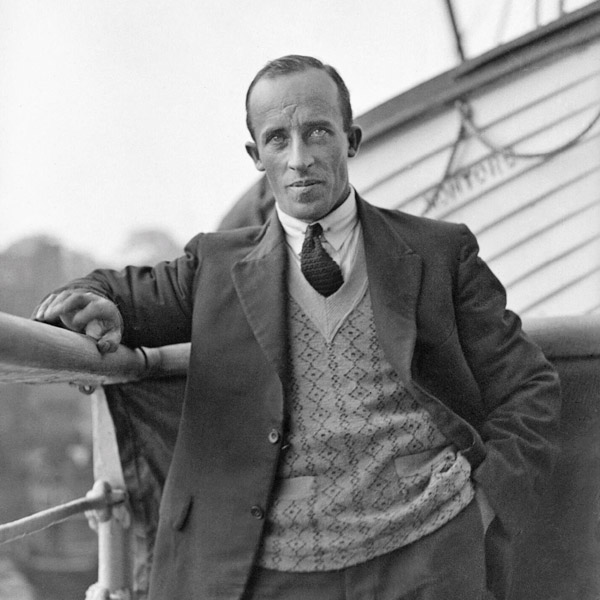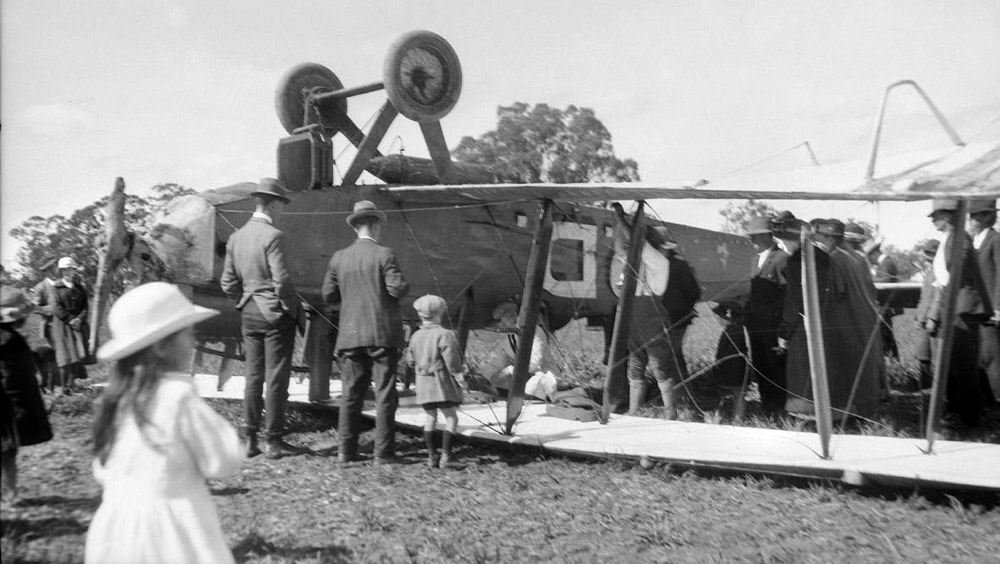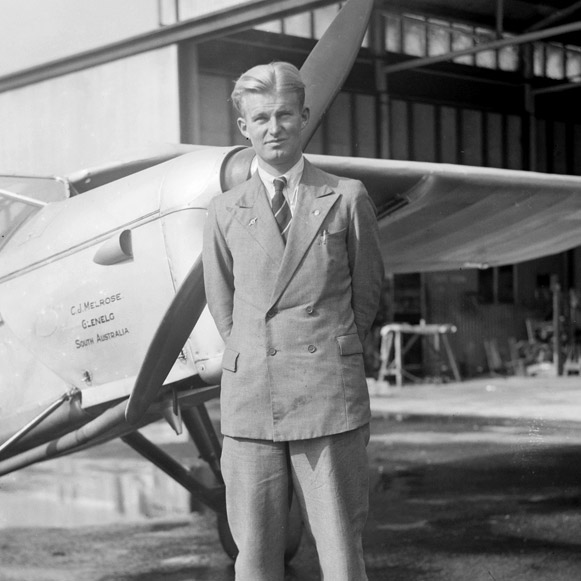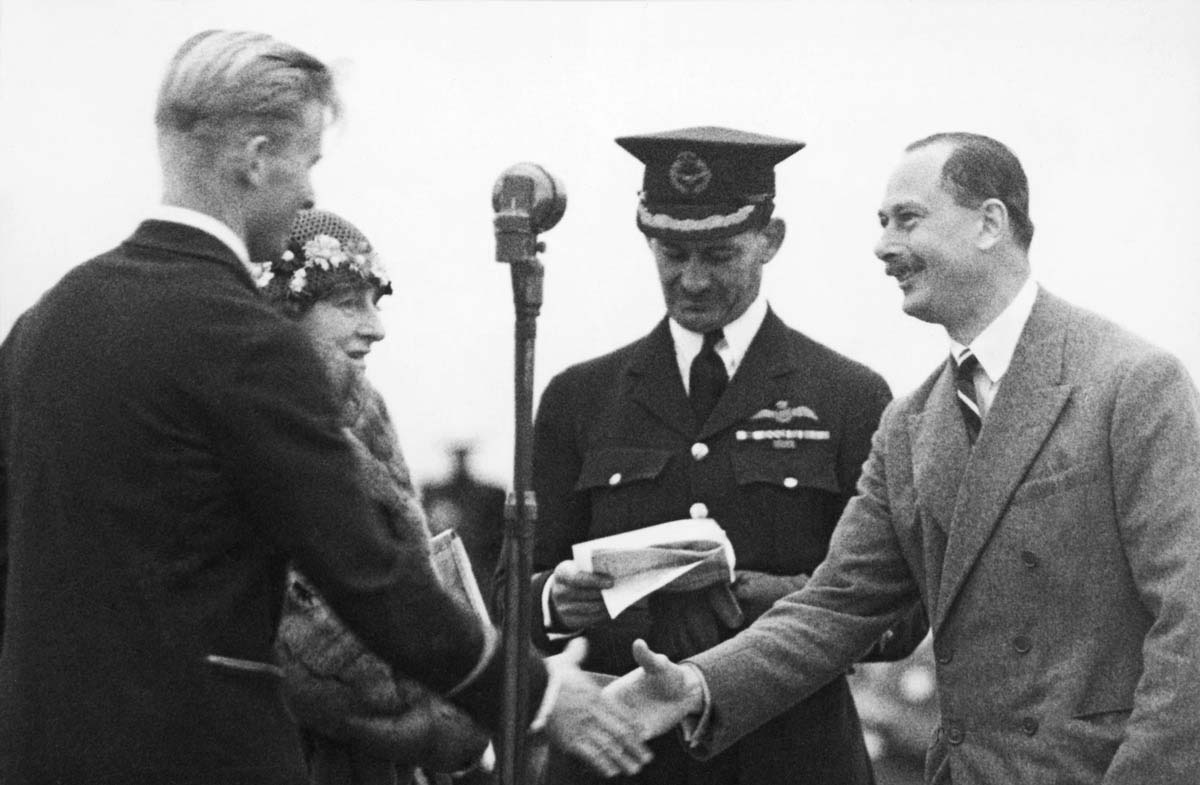Australian Competitors

Ray Parer
Australian aviator Ray Parer was born on the 18th of February 1894, at South Melbourne. He was the second of nine children born to Michael and Myria Parer. As a teenager he developed a keen interest in mechanics and aviation and after leaving school, became a motor mechanic, serving his five-year apprenticeship in Melbourne.
In 1916, at the age of 22, Ray enlisted in the AIF as a mechanic. His aim was to join the Australian Flying Corps, and in February-May 1917 he completed the Aviation Course at the Central Flying School, Point Cook. He was commissioned and sent to England, where he qualified as a pilot on the 15th of February 1918, with the rank of lieutenant. He was posted to the Central Despatch Pool RAF, where he tested and ferried many aircraft types to units in Britain and France.
1919 England to Australia contest
On the 24th of June 1919, he announced his intention to enter the Australian government’s £10,000 air race from England to Australia. Raising funds was difficult but Parer’s associate, Lieutenant John McIntosh, approached Scottish whisky magnate Peter Dawson, who agreed to back the attempt.
Parer purchased a de Havilland DH9 biplane (G-EAQM) but by this time, the air race had already been won by brothers Ross and Keith Smith, who, in a Vickers Vimy, reached the finishing line at Darwin in December. Undaunted, Parer and McIntosh continued with their preparations. They finally left England on the 8th of January 1920. It took them 208 days to reach Darwin and 237 to reach Melbourne, where they were officially welcomed at Flemington Racecourse, on the 31st of August. On the flight, their engine caught fire twice. Over Italy, the aircraft was almost forced into the crater of Mount Vesuvius by a downdraught, and they had to fight off Arabs in the Syrian desert.
They made the first of their many forced landings soon after leaving England and their last at Culcairn, in rural NSW, where they had to land in a paddock. The DH9 was damaged and was transported to Melbourne by train. In spite of their many problems, their flight from England to Australia, was the first by a single-engine aircraft. Although well outside the time limit (720 flying hours) the aviators were each presented with a £500 cheque and an Air Force Cross. Their DH9 aircraft was later presented to the Australian War Memorial.

Ray Parer’s Fairy Fox (G-ACXO) after its forced landing at Culcairn, 1920
Other Adventures
After this flight, Parer established a commercial aviation service in Melbourne. In December of 1920, flying a DH4, he won the first Victorian Aerial Derby, setting a record for an average speed of 142 miles per hour. He then attempted the first flight around Australia to raise funds to enter a $50,000 trans-Pacific flight competition, but the event was cancelled. Regardless, with his cousin Mark Parer, Ray set off from Melbourne in October 1921 in a Royal Aircraft Factory FE2b. By the 7th of February 1922 he had reached Boulder, Western Australia, where the plane crashed on take-off.
On the 25th of January 1921, Parer became the first pilot to land an aircraft on King Island in Bass Strait. He subsequently bought a motor garage there and did not return to aviation for four years. During a gold rush in New Guinea in 1926, he purchased a DH4 and established the Bulolo Goldfields Aeroplane Service Ltd. Over the next fifteen years, Parer staggered from financial crisis to crisis and flew many types of aircraft in New Guinea. In 1928, with George Fonteneaux, he was the first to fly over the Owen Stanley Ranges.
1934 London to Melbourne Air Race
He took time away from searching for gold in New Guinea to participate in the 1934 MacRobertson Trophy Air Race. This would become almost a repeat of the many difficulties he faced in the 1919 race. He purchased an ex-RAF Fairey Fox, and accompanied by Godfrey Hemsworth, left Mildenhall on the 20th October 1934. Half way across the English Channel, the engine began misfiring and Ray was forced to land in a French field. After flying for less than an hour he was seemingly out of the race but he decided to continue. Dogged by mechanical problems, and detained in Baghdad for two weeks waiting for a permit to cross Persia, Parer was the last competitor to finish the race. He did not arrive in Melbourne until the 13th of February 1935, the flight having taken 117 days!
With New Guinea under threat of invasion in 1942, Parer joined the RAAF, but due to ill health, was transferred to the reserves. He had contracted malaria prior the the 1934 race. With his flying days behind him he returned to his beloved New Guinea by sea. There he signed up as an engineer on one of the small boats used by the United States forces for supply and reconnaissance along the northern coast. When the war ended he purchased a ketch and went in search of pearls in Torres Strait. In 1949-51 he skippered a barge around the Papua-New Guinea coast for the Department of Works. He then worked as an engineer aboard tourist vessels on the Great Barrier Reef but returned to Papua New Guinea in 1956 to operate small boats searching for oil. He spent the last years of his life managing two farms at Mount Nebo in Queensland. He died at Brisbane on the 5th of July 1967, aged 73.
Ray Parer never gave up in the face of adversity and was a colourful contributor to the history of Australian aviation.

Jimmy Melrose
Australian aviator Charles James (Jimmy) Melrose was born on 13 September 1913 at Burnside, Adelaide. He was the only child of James and Hilda Melrose. His father was a prosperous pastoralist. Jimmy was nine when his father died, and grew up with his widowed mother in at Glenelg.
He took flying lessons with the (Royal) Aero Club of South Australia at Parafield, gaining his pilot's licence at 19. As reward, his mother bought him his own aeroplane, a DH.80 Puss Moth, which he named My Hildergarde. His mother was his first passenger.
In August 1934, when he was 20, he flew 8,000 miles (12,875 km) solo around Australia, reducing the previous record by almost two days to 5 days, 11 hours. On his 21st birthday, he left South Australia in his Puss Moth, reaching England in a record eight days and nine hours.
The youngest competitor
A skilful, natural flyer, Melrose was tall and good-looking. He became an international celebrity as the youngest and only solo competitor in the 1934 MacRobertson Trophy Air Race, finishing third in the handicap division in time of 8 days and 9 hours.
In January 1935, Melrose studied navigation and blind flying in England at the Air Service Training Centre, Hambling. In November he returned to Australia, flying a new Percival Gull. On the way, he joined in the unsuccessful search for Sir Charles Kingsford Smith over the Andaman Sea. In December the same year, he was seriously injured when attempting a forced landing on a cricket ground at Penrose, New South Wales. After recovering, he went to England by sea to buy a five-seater Heston Phoenix monoplane. In April 1936, he used the Phoenix on a goodwill flight home to publicise South Australia's centenary. A crowd of 8,000 greeted him on Anzac Day at Parafield.
On the 5th of July 1936, when Jimmy was 22, he took off on a charter flight from Melbourne to Darwin. Over Melton, Victoria, in turbulence and low visibility, his aircraft broke up, killing him and his passenger, Alexander Campbell, DSO. The cause of the accident was later determined to be structural failure of the aircraft.
Australians joined Prime Minister Joseph Lyons in mourning their 'chivalrous young knight of the air'. Funeral services were held simultaneously in Melbourne's and Adelaide's Anglican cathedrals. More than 100,000 mourners attended his state funeral procession in Melbourne, lining the route from St Paul's to Springvale Cemetery as planes circled overhead. In Adelaide, both Houses of Parliament suspended their sittings, and St. Peter's Cathedral was packed, mainly with women who had idolised Jimmy.

Jimmy Melrose, with his mother, being congratulated by the Duke of Gloucester at Melbourne, 1934
This community project is powered by donations and volunteers. Please consider making a donation.
© Copyright Uiver Memorial Community Trust 2012-2026
Hosting kindly donated by Coxtech



